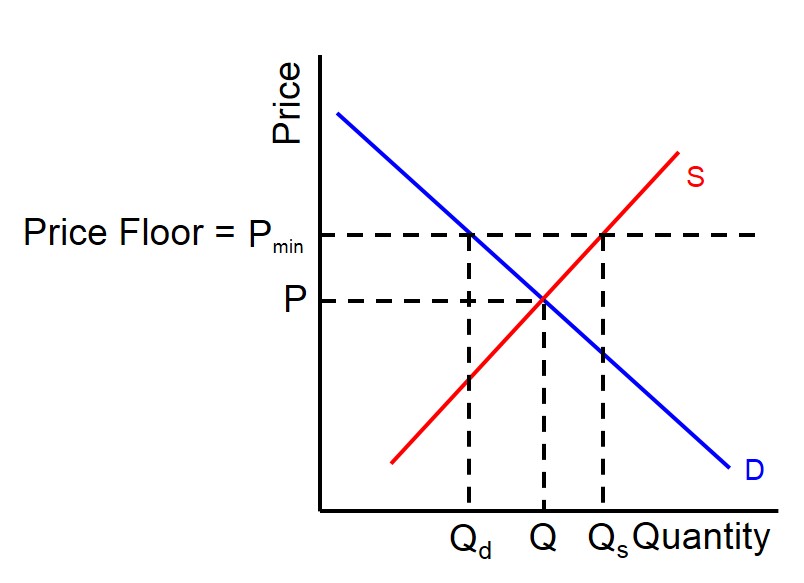The lowest price that it is legal to trade at and will only be binding if it is set higher than the market equilibrium price. The price floor creates excess supply in the market and as a result of that, it is usually used in conjunction with other policies if the purpose of the price floor is to protect suppliers.
Below is an example of a minimum price implaced in a market by the government to prevent a good from being sold at an excessively low price. In this instance this good cannot be sold below the minimum price in the market as this is strictly prohibited.
